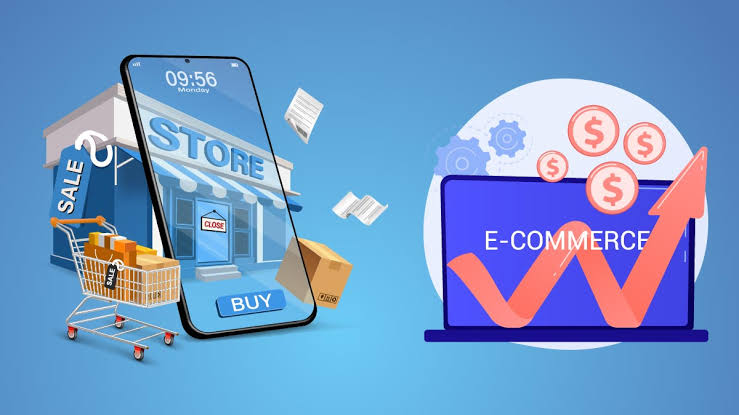Online shopping has reshaped the global retail landscape in profound ways. As we move deeper into 2025, the momentum of e-commerce continues to disrupt traditional retail structures, forcing businesses to rethink how they operate, market, and serve customers. What started as a convenience has grown into a primary method of shopping for millions, altering consumer habits and transforming the future of retail entirely.
The shift is not merely technological—it’s cultural, economic, and psychological. With convenience, personalization, and rapid delivery at the forefront, the expectations of consumers are no longer aligned with the old brick-and-mortar model. Retailers today face a new reality where adaptation is not optional but essential for survival.
Decline of Traditional Retail Stores
One of the most visible consequences of the rise in online shopping is the steady decline of physical retail stores. In cities and towns around the world, shopping malls and high streets are facing reduced foot traffic and, in many cases, closures.
Many long-established retail chains have scaled back operations, reduced store sizes, or exited markets entirely. For some, this has been a strategic move, focusing resources on digital expansion. For others, it marks the end of an era.
Consumers now expect more than just physical presence. They want convenience, speed, and access to a wider range of products than any single store can offer. As a result, retail brands are increasingly abandoning large, costly storefronts in favor of smaller showrooms, pop-up experiences, or fully digital storefronts.
Surge in E-commerce Platforms
E-commerce has exploded in the last few years, especially after the global events of the early 2020s that accelerated digital adoption. In 2025, e-commerce platforms are more diverse and specialized than ever before.
Global marketplaces like Amazon, Alibaba, and Walmart.com continue to dominate, but niche platforms are gaining ground. These smaller, curated platforms cater to specific audiences—from eco-conscious consumers to enthusiasts of handmade products.
What’s driving this surge is not just accessibility, but enhanced technology. Features like AI-powered recommendations, advanced search filters, and personalized product feeds have made shopping online faster and more intuitive. This dynamic environment offers businesses the chance to reach customers across borders without the overhead of physical space.
Changing Consumer Behavior
The habits of consumers in 2025 are shaped by immediacy, personalization, and value. The digital environment has conditioned shoppers to expect rapid results, seamless experiences, and highly tailored content.
Some key behavioral shifts include:
- Increased preference for mobile shopping via apps
- Greater demand for same-day or next-day delivery
- Dependence on reviews, ratings, and social media influencers before purchase
- Rising interest in ethical sourcing and sustainability transparency
- Preference for digital wallets and flexible payment options
Retailers who fail to meet these evolving expectations risk becoming irrelevant. Today’s consumer is well-informed and empowered, with endless alternatives just a click away.
Rise of Omnichannel Retailing
Rather than resisting the digital tide, many forward-thinking retailers have embraced omnichannel strategies. Omnichannel retailing integrates physical and digital touchpoints to create a unified shopping experience.
Examples include:
- Buy-online-pick-up-in-store (BOPIS) services
- In-store kiosks for ordering out-of-stock items
- Mobile apps that bridge in-store and online promotions
- Real-time inventory syncing across platforms
This blended approach allows retailers to offer the convenience of digital with the experience of in-person shopping. It also helps gather customer data across channels, allowing brands to fine-tune their offerings and strengthen loyalty.
Advances in Logistics and Fulfillment
Behind every successful online store is a sophisticated logistics system. In 2025, retailers are investing heavily in fulfillment networks, automation, and last-mile delivery solutions to keep up with rising demand.
Key trends shaping fulfillment include:
- Use of robotics in warehouses for faster sorting and packing
- Expansion of micro-fulfillment centers in urban areas
- Growth of drone and autonomous vehicle deliveries
- Subscription-based models for frequent delivery users
Faster delivery isn’t just a perk anymore—it’s an expectation. Retailers that can’t meet the speed demands of their customers face the risk of losing business to competitors who can.
Personalization and Data-Driven Marketing
Online shopping allows for levels of personalization that were never possible in traditional retail. With every click, search, and purchase, consumers provide valuable data that retailers now use to create highly customized experiences.
This includes:
- Dynamic pricing based on user behavior and market trends
- Personalized product recommendations
- Email and SMS marketing tailored to individual preferences
- AI chatbots offering 24/7 customer support
In 2025, personalization is not simply about increasing sales—it’s about creating long-term customer relationships. Businesses that respect privacy while offering personalized value are gaining significant traction.
Social Commerce and Influencer Marketing
Shopping is no longer confined to standalone e-commerce websites. Social media platforms are now key retail spaces, offering shoppable posts, live selling events, and integrated payment options.
Influencers play a central role in driving this trend. Consumers are increasingly relying on trusted figures to guide their purchasing decisions, making influencer partnerships a critical marketing tool.
Platforms like TikTok Shop, Instagram Shopping, and YouTube’s Live Commerce have become central to product discovery and impulse purchases. For younger consumers especially, social media is where they first learn about brands and make buying decisions.
Environmental and Ethical Considerations
As online shopping grows, so does awareness of its environmental impact. From packaging waste to carbon emissions from shipping, many consumers are calling for more sustainable practices.
Retailers are responding by:
- Offering carbon-neutral shipping options
- Using recycled or minimal packaging
- Providing transparent supply chain information
- Supporting circular economy practices like product take-back programs
Sustainability is no longer a niche concern. It is becoming a core competitive factor in consumers’ buying decisions.
The Future of Retail: Digital First, Human Always
Looking ahead, the retail industry will continue evolving toward a digital-first framework. But even as technology takes center stage, human connection remains vital.
Retailers that find ways to blend automation with empathy, speed with trust, and convenience with ethics will define the next chapter of retail success. It’s not just about selling products anymore—it’s about creating experiences, stories, and relationships.
The transformation sparked by online shopping has made the retail industry more fluid, data-driven, and global. In this rapidly shifting environment, only the most adaptable, customer-focused retailers will thrive.



